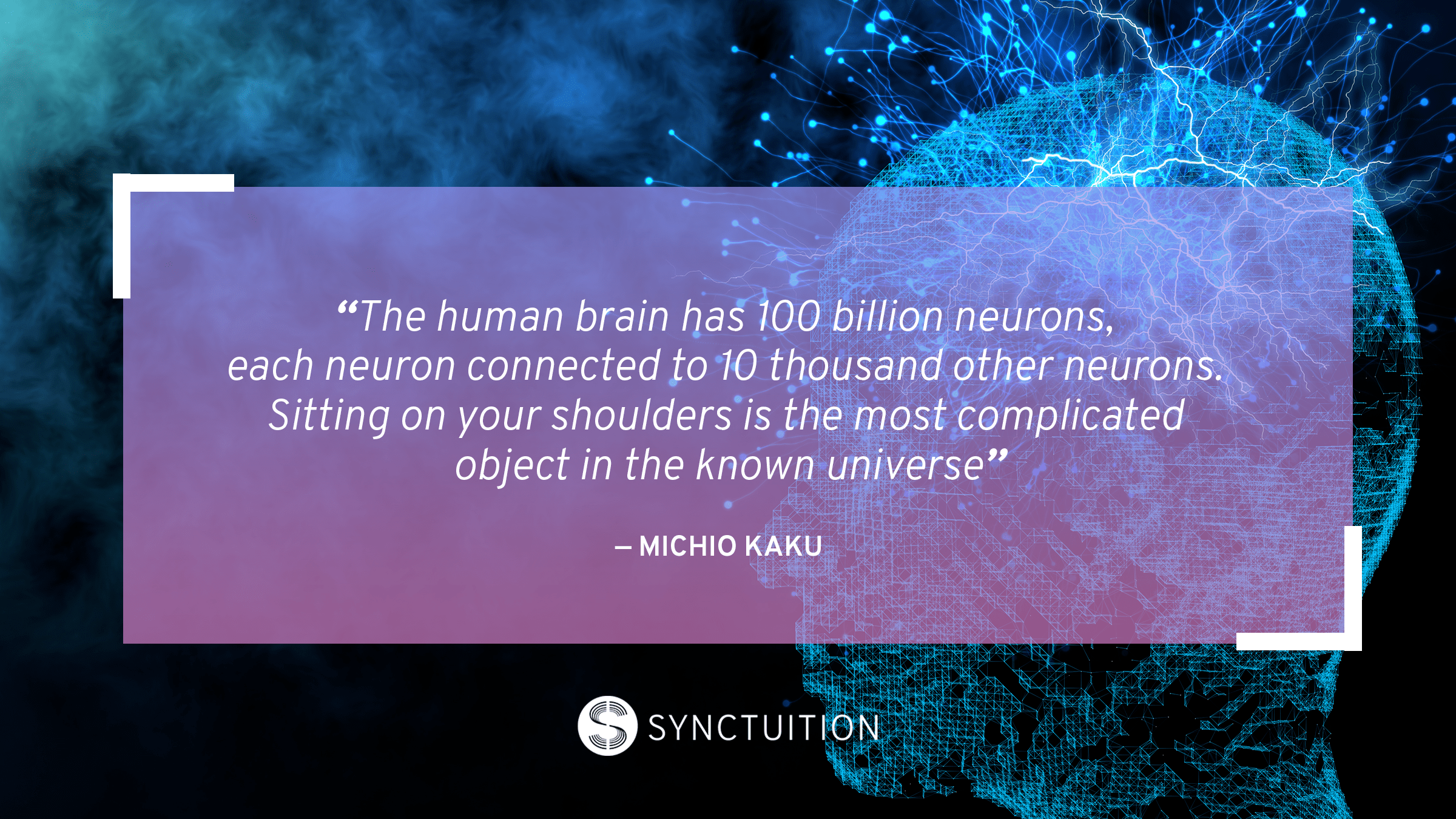Boost Your Brainwave Activity With Binaural Beats Meditation
Imagine having access to one of the most powerful and complex network systems in the world. In fact, you already do; it is your brain. To date, this all-important organ remains a source of mystery and fascination. It’s widely believed that humans only use 10% of the brain’s capacity. This couldn’t be further from the truth as our brains are always active. A complex network of wires inside the brain is connected by synapses, which pass signals to one another at all times. Brainwave frequency is the speed at which synapses fire. Each brainwave is unique and they correspond to a different function such as better sleep or concentration. It stands to reason then, that to have a powerful brain we need to tap into those mysterious brainwaves. In recent years, technology and meditation have joined forces to unravel the full potential of brainwaves, and hence, the human mind.
The wonders of the human brain
The human brain contains 100 billion neurons and is responsible for burning a quarter of our energy intake. We know messages pass through neurons like electrical signals. They jump from one to another through the release of neurotransmitter chemicals. We also know the brain is in charge of memory, sight, and smell. Although there have been plenty of remarkable advances and discoveries, this organ remains shrouded in mystery. Science hasn’t quite deciphered the most puzzling enigma: how these patterns of electrical and chemical signals can create human consciousness, develop creativity and intelligence.
In recent years, research has focused on brainwaves to understand the functioning of the human brain. Perhaps you have experienced the vitalizing sensation of a brainwave. It gives you a moment of newfound clarity, a sudden shift in perspective that comes out of nowhere. Even though a brainwave is just an idiom used to describe our thoughts, there is much more to it.
Brainwaves and our minds play a key role in our quest for personal fulfillment. Research from Columbia University shows that waves travel through the human cortex. Depending on how well the brain is performing a task, waves become more organized. This proves that waves are relevant to behavior, bolstering previous research, which links them to memory, perception, attention, and even consciousness.

What are brainwaves?
Brainwaves are electrical impulses in the brain. Different types of brainwaves relate to unique states of thought, emotions, or experience. Like the ocean, brainwaves are in constant movement. This invisible process starts with neurons. The human brain has billions of individual neurons. Communication happens between neurons through small electrical currents, which travel throughout enormous networks of brain circuits. When neurons activate, the electrical pulses they produce create a brainwave.
When many neurons interact this way at the same time, the activity becomes so strong that it’s detected outside the brain. Neuroscientists measure the activity with electroencephalography (EEG) – i.e. an electric brain graph. EEGs brainwaves convey information at the rate of repetitions. These brainwave patterns have different names and correspond to specific functions. They are also dependent upon the frequency output, which is measured in hertz (Hz). Hertz refers to the number of times a wave repeats itself within a second. Each brainwave is named after a Greek letter: beta, alpha, theta, delta, and gamma.
Delta waves (0.5 – 4 Hz): deep sleep
The slowest of frequencies, delta waves occur in deep, dreamless sleep. The deepest stage of sleep is crucial for your overall well-being, as promotes deep healing. Delta waves have also been linked to our unconscious mind. The information received here is usually unavailable at a conscious level.
Delta waves are also known for increasing the production of two anti-aging hormones, DHEA and melatonin. What’s more, they improve social intelligence and promote compassion and empathy for others.

Theta waves (4 – 7.5 Hz): light sleep and meditation
Theta brainwaves are present during light sleep and deep meditation. You only experience light sleep momentarily as you drift off and wake up from deep sleep. Unlike the other brainwaves, theta is elusive.
Theta waves might promote a positive mental state and encourage creativity. High frequencies of theta allow you to experience vivid visualizations, great inspiration, and profound creativity to develop projects and solve problems. Additionally, they improve your focus and keep you calm and balanced.
Alpha waves (8 – 13 Hz): relaxation and reflection
Have you ever stopped to take a break and felt relaxed and warm inside? This might be the work of alpha brainwaves, which aid calmness, alertness, mental coordination, learning, and mind/body integration. Just as their name suggests, alpha waves are most dominant during the quiet states of mind; silent thinking, daydreaming, or a meditative state.

Beta waves (13 – 40 Hz): learning and concentration
When you are studying for a final exam or deeply invested in learning a new language, your beta brainwaves are spiraling. Beta brainwaves mainly occur when we are doing a task that involves thinking.
While experiencing high levels of beta waves, you are wide-awake and alert. Your mind is sharp and focused. What’s more, your brain makes connections easily and quickly to prompt you to do the tasks that require your full attention. You will find it easy to solve problems that demand logic and critical reasoning.
Gamma waves (25 – 100 Hz): deep consciousness and insight
The fastest of all brainwaves, Gamma waves are responsible for the simultaneous processing of information from different areas of the brain. They are in charge of passing information rapidly and quietly, which means the brain has to be silent to access the gamma state.
Gamma waves were relatively unknown and dismissed as “spare brain noise” until the development of digital EEG recorders. Researchers discovered that this noise was highly active when in states of altruism, love, and other virtues. Reportedly, gamma rhythms modulate perception and consciousness. When found in greater quantities, they are believed to aid spiritual emergence.
In spite of extensive research, gamma brainwaves are still a mystery. Yet, neuroscientists continue to discover more and more properties of the brain during states of high gamma frequencies. For example, expert meditators such as Buddhist monks associated gamma waves with feelings of “blessings”.

The power of Gamma Frequency
The gamma wave originates in the thalamus and travels from the back of the brain to the front and back again 40 times per second. This rapid action makes the gamma state one of peak mental and physical performance. Although everyone has gamma brainwave activity, the number of gamma waves produced varies in every person. In fact, research links low amounts of gamma waves to learning difficulties, impaired mental processing, and poor memory.
This is why it is vital to know that gamma is a governing agent in the brain. When you move up into the 40Hz Gamma range, the brain becomes synchronized across frequencies and across the lobes. As a result, the brain is more efficient and coherent, and the noise lessens in favor of quietness. Impressively, the flow of information across hemispheres improves. In turn, you experience better coordination from both the front and back of the central nervous system.
With a clear mind, you can enjoy all the benefits that a powerful brain has to offer such as improved creativity, insight, clarity, mental lucidity, and relaxed sensory awareness. You also gain access to delta’s psychic awareness and empathy. You are able to function in a super-conscious way. This is why the Gamma wave is the most transcendent and spiritually-related frequency. By enhancing your gamma frequency, you develop intelligence that is moving in the direction of spirituality.
Scientific studies on Gamma Brainwaves
In 2002, a Tibetan monk traveled from Nepal to Madison, Wisconsin so scientists could study his brain closely. With a specially designed cap, the monk’s brainwaves were measured during meditation. As soon as the monk began practicing compassion meditation, the monitors perceived a huge burst of electrical activity. The incredible thing is that, although bursts of electrical brain activity are not uncommon, they are usually involuntarily. This wasn’t the case during this study as the activity lasted the entire period of the monk’s meditation.
After this initial study, several Buddhist monks took the test. The extraordinary results revealed an elevated gamma brainwave activity during meditation and, overall, everyday neural activity. The source of the brainwave activity was the left prefrontal cortex, the part of the brain associated with self-control, happiness, and compassion. What’s more, the monks showed reduced activity in the amygdala — the brain’s fight-or-flight center.
How to enhance your brain power naturally
You can train your brainwaves to boost concentration, sleep, sense of compassion, and overall mental wellbeing. Plenty of scientific research suggests that meditation is the easiest and most natural way to improve your brainpower. When you meditate, there is a lot of activity going on inside your brain. This activity burst significantly alters how you feel and think.
Meditation stimulates different parts of the brain in a unique manner:
- The reticular keeps your brain alert and helps you respond to situations. When you meditate, reticular activity slows down, helping you remain calm and peaceful.
- The frontal lobe, the one in charge of planning and reasoning, switches off during meditation, allowing you to detach and relax.
- The parietal lobe, which gives you a sense of time, also slows down, reducing your stress and anxiety levels.
- The thalamus, which relays motor and sensory signals to the cerebral cortex, slows down its activity, enabling you to keep calm.

The long term benefits of meditation
Recent neuroscientific findings indicate that meditation goes far beyond relaxation; it rewires brain circuits that boost both mind and body health. Just like physical exercise, the more you meditate, the more you see the benefits and the longer they last. In fact, a study by researchers at the University of California produced evidence that constant meditation can elicit cognitive benefits for up to seven years.
The study invited 60 healthy people (who had previous experience with meditation) to participate in a three-month meditation retreat. By the end, participants showed a better sense of perception and improved psychological well-being. On a more scientific level, the research found an increase in telomerase activity in the participants’ blood samples. Telomerase is an enzyme in the body, which has to do with cellular viability or the lifespan of your cells and overall cells as you grow older.
Not only does meditation make you feel better internally, but it also could help you live longer. But of course, in order to experience these wonderful benefits, you should dedicate time and effort to achieving a deep meditative state.
Meditation with Sound and Binaural Beats
The good news is that you don’t have to be a Buddhist monk to enjoy the hundreds of benefits of meditation. Many people believe meditation requires sitting still and in total silence while struggling to empty the mind. Although this is a myth, it is true that meditation is not easy for everyone. For those who struggle with concentration, meditation can be frustrating. For some, it might even become another source of stress.
Fortunately, in the past 50 years, technology has advanced at an astonishing speed. Nowadays, specific technologies induce the same brainwave states you would experience during deep meditation by simply listening to certain sounds. One of the most popular and effective types of sound technology are binaural beats. When you listen to binaural beats, you create the same brainwave states as if you were meditating. This happens quickly and naturally.
Binaural beats form when diverse modified sounds are sent to each ear, which allows the brain to produce a third imaginary sound to compensate for the difference between the original two. This way, binaural beats stimulate rapid and effective communication between the opposite sides of the brain.

The perfect mix of meditation and audio technology
In a frequency of between 1 and 40 Hz, binaural beats create the same brainwave patterns you would experience while meditating. This happens because, when you listen to a sound with a certain frequency, your brainwaves synchronize with the exact same frequency. According to research, listening to binaural beats will help you enter a meditative state of calmness and synchronicity.
The best way to enjoy the benefits of meditation with binaural beats is to try out MindSpa. With its groundbreaking combination of binaural beats, 3D sounds, and entrainment frequencies, MindSpa is the first audio meditation program of its kind and the best way to enter a deep, pleasant meditative state.
MindSpa uses binaural beats in the Gamma (~40Hz) range for better brain synchronization and body relaxation. The program consists of over a hundred audio journeys, which each relate to an important aspect of life such as confidence, faith, love, patience, intuition, and much more. When you listen to one of our journeys, your mind will be stimulated with peaceful and authentic sounds from nature and musical instruments.

Tap into your brainwaves today!
Diving deeper into your brainwaves can help you boost and unravel your mental capacity. Technological advances of meditation with binaural beats allow you to enter brainwave states whenever you want to. Allow your brain to function in a completely different, more efficient, and holistic way when you listen to MindSpa’s groundbreaking binaural beats audio journeys.








